
Intel Celeron N6210 Benchmark, test e specifiche
Ultimo aggiornamento:
Intel Celeron N6210 è stato rilasciato in Q1/2021 e ha 2 core. Il processore può elaborare 2 thread contemporaneamente e utilizza una scheda madre con il socket BGA 1493. Nel benchmark Geekbench 5, Intel Celeron N6210 ha ottenuto un risultato di 614 punti (single-core) o 1.092 punti (multi -nucleo).
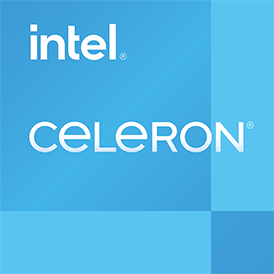
| Cognome: | Intel Celeron N6210 |
|---|---|
| Famiglia: | Intel Celeron (165) |
| Gruppo CPU: | Intel Celeron J6000/N6000 (4) |
| Architettura : | Elkhart Lake |
| Segmento: | Mobile |
| Generazione: | 11 |
| Predecessore: | -- |
| Successore: | -- |
CPU Cores e frequenza di base
Il Intel Celeron N6210 ha 2 core. La frequenza di clock di Intel Celeron N6210 è 1,20 GHz (2,60 GHz). È possibile effettuare una valutazione iniziale delle prestazioni utilizzando il numero di core della CPU.
| CPU Cores / Threads: | 2 / 2 |
|---|---|
| Architettura principale: | normal |
| Cores: | 2x |
| Hyperthreading / SMT: | No |
|---|---|
| Overclocking: | No |
| Frequenza: | 1,20 GHz |
| Turbo Frequenza (1 Core ): | 2,60 GHz |
| Turbo Frequenza (2 Cores): | 2,20 GHz |
Grafica interna
Intel Celeron N6210 ha una grafica integrata che il sistema può utilizzare per riprodurre in modo efficiente i video, ad esempio. Intel Celeron N6210 ha Intel UHD Graphics 10th Gen (16 EU) installato, che ha 16 multiprocessori di streaming (128 shader).
| nome GPU: | Intel UHD Graphics 10th Gen (16 EU) |
|---|---|
| Frequenza GPU : | 0,25 GHz |
| GPU (Turbo ): | 0,75 GHz |
| Unità di esecuzione: | 16 |
| Shader: | 128 |
| Hardware Raytracing: | No |
| Data di lancio : | Q1/2021 |
| Max. visualizzazioni: | 3 |
|---|---|
| Generation: | 11 |
| Direct X: | 12 |
| Tecnologia : | 14 nm |
| Max. GPU Memoria: | 64 GB |
| Frame Generation: | No |
Hardware codec support
I processori con grafica integrata possono elaborare più velocemente utilizzando questi codec video. Il supporto per i codec moderni può aumentare significativamente l'efficienza del sistema durante la riproduzione video.
| h265 / HEVC (8 bit): | Decodificare / Codificare |
|---|---|
| h265 / HEVC (10 bit): | Decodificare / Codificare |
| h264: | Decodificare / Codificare |
| VP8: | Decodificare / Codificare |
| VP9: | Decodificare / Codificare |
| AV1: | Decodificare |
|---|---|
| AVC: | Decodificare / Codificare |
| VC-1: | Decodificare |
| JPEG: | Decodificare / Codificare |
Memoria & PCIeIntel Celeron N6210 supporta un massimo di 32 GB memoria. A seconda della scheda madre, il processore può utilizzare un massimo di 4 (Quad Channel) canali di memoria. Ciò si traduce in una larghezza di banda massima della memoria principale di 51,2 GB/s. |
|
| Tipo di memoria : | Banda di memoria: |
|---|---|
| LPDDR4-3200 DDR4-3200 | 51,2 GB/s 51,2 GB/s |
| Max. Memoria: | 32 GB |
| Canali di memoria : | 4 (Quad Channel) |
| ECC: | No |
| PCIe: | 3.0 x 8 |
| PCIe Larghezza di banda: | 7,9 GB/s |
Gestione termicaIntel Celeron N6210 ha un TDP di 6.5 W. Sulla base del TDP, il produttore del sistema può e deve adattare la soluzione di raffreddamento al processore. |
|
|---|---|
| TDP (PL1 / PBP): | 6.5 W |
| TDP (PL2): | -- |
| TDP up: | -- |
| TDP down: | -- |
| Tjunction max.: | -- |
Dettagli tecnici
La produzione moderna riduce il calore disperso di un processore e ne aumenta l'efficienza. Intel Celeron N6210 è realizzato in 10 nm e ha 5,50 MB cache.
| Tecnologia : | 10 nm |
|---|---|
| Design a chip: | Monolitico |
| Presa: | BGA 1493 |
| L2-Cache: | 1,50 MB |
| L3-Cache: | 4,00 MB |
| AES-NI: | Si |
| Sistemi operativi: |
| Virtualizzazione: | VT-x, VT-x EPT, VT-d |
|---|---|
| Set di istruzioni (ISA): | x86-64 (64 bit) |
| Estensioni ISA: | SSE4.1, SSE4.2 |
| Data di lancio : | Q1/2021 |
| Prezzo di rilascio: | 64 $ |
| Numero di parte: | -- |
| Documenti: | Scheda tecnica |
Valuta questo processore
Risultati di benchmark

I risultati del benchmark per Intel Celeron N6210 sono stati attentamente controllati da noi. Pubblichiamo solo risultati di benchmark che sono stati creati da noi o che sono stati inviati da un visitatore e poi controllati da un membro del team. Tutti i risultati sono basati e rispettano le nostre linee guida di benchmark.
Geekbench 5, 64bit (Single-Core)
Geekbench 5 è un benchmark multi-piattaforma che usa in modo intensivo la memoria del sistema.Il test single-core utilizza solo un nucleo elaborativo della CPU. A tal fine, il numero di nuclei elaborativi o la capacità di hyperthreading non sono rilevanti.
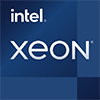
|
Intel Xeon E5-2660 v2
10C 20T @ 3,00 GHz |
||
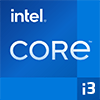
|
Intel Core i3-6100U
2C 4T @ 2,30 GHz |
||
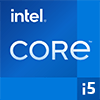
|
Intel Core i5-2540M
2C 4T @ 3,30 GHz |
||
|
|
Intel Celeron N6210
2C 2T @ 2,60 GHz |
||
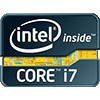
|
Intel Core i7-980X
6C 12T @ 3,60 GHz |
||
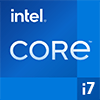
|
Intel Core i7-980
6C 12T @ 3,60 GHz |
||

|
AMD 3020e
2C 4T @ 2,60 GHz |
||
Geekbench 5, 64bit (Multi-Core)
Geekbench 5 è un benchmark multi-piattaforma che usa in modo intensivo la memoria del sistema.Il test multi-core coinvolge tutti i nuclei elaborativi della CPU e si avvale del hyperthreading.
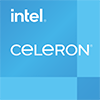
|
Intel Celeron G1630
2C 2T @ 2,80 GHz |
||

|
AMD 3015Ce
2C 4T @ 1,20 GHz |
||
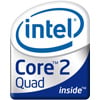
|
Intel Core 2 Quad Q9300
4C 4T @ 2,50 GHz |
||
|
|
Intel Celeron N6210
2C 2T @ 2,20 GHz |
||

|
Intel Core i3-2370M
2C 4T @ 2,40 GHz |
||

|
Intel Celeron 3965U
2C 2T @ 2,20 GHz |
||

|
Intel Core M-5Y10
2C 4T @ 1,60 GHz |
||
iGPU - Prestazioni FP32 (GFLOPS a precisione singola)
Le prestazioni di calcolo teoriche dell'unità grafica interna del processore con precisione semplice (32 bit) in GFLOPS. GFLOPS indica quanti miliardi di operazioni in virgola mobile che l'iPPU può eseguire al secondo.

|
Intel Celeron G3950
Intel HD Graphics 610 @ 1,05 GHz |
||

|
Intel Pentium G4560
Intel HD Graphics 610 @ 1,05 GHz |
||

|
Intel Pentium G4560T
Intel HD Graphics 610 @ 1,05 GHz |
||
|
|
Intel Celeron N6210
Intel UHD Graphics 10th Gen (16 EU) @ 0,75 GHz |
||

|
Intel Celeron N6211
Intel UHD Graphics 10th Gen (16 EU) @ 0,75 GHz |
||
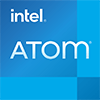
|
Intel Atom x6211E
Intel UHD Graphics 10th Gen (16 EU) @ 0,75 GHz |
||

|
Intel Atom x6413E
Intel UHD Graphics 10th Gen (16 EU) @ 0,75 GHz |
||
Risultati stimati da PassMark CPU Mark
Alcune delle CPU elencate di seguito sono stati sottoposti a benchmarking da CPU-monkey. Tuttavia, la maggior parte delle CPU non sono state testate e i risultati sono stati stimati utilizzando una formula segreta di proprietà di CPU-monkey. Come tali, essi non riflettono con precisione i valori attuali di Passmark CPU Mark e non sono stati approvati da PAssMark Software Pty Ltd.
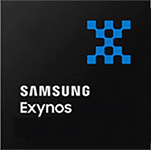
|
Samsung Exynos 7885
8C 8T @ 2,20 GHz |
||

|
Intel Core M-5Y10
2C 4T @ 1,60 GHz |
||

|
AMD Phenom II X2 B53
2C 2T @ 2,80 GHz |
||
|
|
Intel Celeron N6210
2C 2T @ 2,20 GHz |
||

|
Intel Core 2 Quad Q8200
4C 4T @ 2,33 GHz |
||

|
AMD GX-420CA
4C 4T @ 2,00 GHz |
||

|
Intel Core M-5Y70
2C 4T @ 2,00 GHz |
||
Benchmarks

Geekbench 5 (SC)
2.488 inserimenti
2.488 inserimenti

Geekbench 5 (MC)
2.461 inserimenti
2.461 inserimenti

FP32 SP (iGPU)
2.026 inserimenti
2.026 inserimenti

PassMark CPU-Mark
2.392 inserimenti
2.392 inserimenti
Confronti più popolari
Torna all'indice






